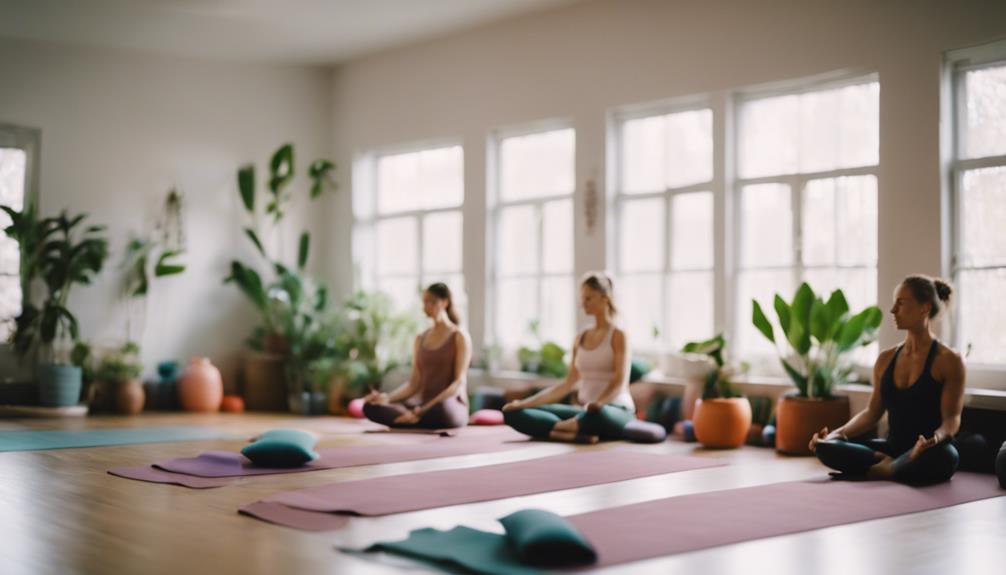Yoga is a time-honored practice that fosters physical, mental, and emotional well-being. Among its many forms, partner yoga offers an opportunity for two individuals to deepen their practice and strengthen their connection. Beginners can embark on this journey together, discovering the joy of movement and mindfulness in tandem. This article provides a comprehensive guide to two-person yoga poses, focusing on beginner-friendly options that promote safety, communication, and alignment for a rewarding experience.
As practitioners explore partner yoga, they not only grow in their physical capabilities but also cultivate trust and support between partners. The shared experience of practicing yoga together can enhance the bond between friends, family members, or couples, allowing them to connect on a deeper level. Partner yoga is accessible to everyone, regardless of skill level, making it an ideal starting point for those looking to explore yoga in a duo.
Benefits of Practicing Partner Yoga Together
Partner yoga offers numerous benefits that extend beyond the physical practice. It encourages collaboration and teamwork, allowing partners to motivate and support one another while attempting new poses. This supportive environment can help alleviate anxiety for beginners, as they may feel more comfortable tackling challenging poses with a partner by their side. Additionally, practicing together can enhance emotional resilience and improve mental focus, leading to a more fulfilling yoga experience.
Furthermore, partner yoga promotes better body awareness and alignment. As partners work together, they can offer constructive feedback on each other’s postures, helping to correct misalignments. This collaborative aspect emphasizes the importance of communication and understanding, teaching practitioners to listen not just to their own bodies but also to those of their partners. Ultimately, partner yoga nurtures a sense of community, making it an enriching and enjoyable practice for all involved.
Essential Safety Tips for Partner Yoga Practice
Safety is paramount in partner yoga, especially for beginners who may be less familiar with their bodies and the mechanics of various poses. One of the first safety tips is to ensure that both partners are on the same page regarding their comfort levels and physical limitations. Clear communication before and during practice helps prevent injuries and ensures that both partners feel secure in their movements. Establishing a safe space, free from distractions and hazards, further enhances the overall experience.
Additionally, it is crucial to practice within your own limits while being mindful of your partner’s capacity. Beginners should start with basic poses that require minimal coordination and balance. Always warm up adequately before engaging in more complex poses to prepare the body and reduce the risk of injury. If any discomfort or pain arises during a pose, partners should immediately communicate and adjust or exit the pose as necessary to prioritize safety.
Basic Warm-Up Exercises for Two-Person Yoga
Preparing the body for yoga practice is essential, particularly in a partner setting where both individuals’ movements are interconnected. A gentle warm-up routine can help increase flexibility, improve circulation, and reduce the chance of injury. Begin with simple stretches such as forward bends, side stretches, and gentle twists, preferably facing each other to encourage engagement. Taking deep breaths together while synchronizing movements can enhance the connection and set a calming tone for the practice.
Another effective warm-up involves partner-assisted stretches. Standing back-to-back, partners can lean into each other for support while gently stretching each other’s arms and legs. This not only warms up the body but also fosters trust and reliance on one another. By engaging in these warm-up exercises, partners can create a harmonious environment that encourages exploration and enjoyment as they transition into yoga poses.
Top 5 Beginner-Friendly Partner Yoga Poses
For those new to partner yoga, starting with beginner-friendly poses can help build confidence and establish a solid foundation. Here are five poses that are ideal for beginners:
- Partner Forward Bend
- Double Tree Pose
- Seated Cat-Cow Stretch
- Partner Downward Dog
- Back-to-Back Chair Pose
These poses are not only simple to execute but also allow practitioners to experience the benefits of partner yoga without the complexities of more advanced poses. They encourage cooperation and communication, setting the stage for a fulfilling practice as both partners learn to trust one another’s support.
Detailed Instructions for Each Yoga Pose
-
Partner Forward Bend: Stand facing each other, feet hip-width apart. Hold hands and take a deep breath. As you exhale, both partners hinge at the hips, bending forward together while keeping the spine straight. Hold for a few breaths, then slowly rise back up.
-
Double Tree Pose: Stand side by side. Each partner lifts their inside foot and places it on the opposite thigh or calf, creating a tree shape. Both partners can reach their arms overhead, creating a mirror image. Focus on balance and breath.
-
Seated Cat-Cow Stretch: Sit facing each other with legs crossed. On an inhale, arch your back and lift your chest (Cow), and on the exhale, round your spine and tuck your chin (Cat). Synchronize your movements for a harmonious flow.
-
Partner Downward Dog: One partner assumes Downward Dog, while the other stands behind them. The standing partner can place their hands on the grounded partner’s back for support, creating a stable base while they stretch.
-
Back-to-Back Chair Pose: Stand back-to-back with feet hip-width apart. As both partners bend their knees into a Chair Pose, lean against each other for support. Keep the spine straight and hold for several breaths.
Understanding Body Alignment in Partner Yoga
Body alignment is crucial in yoga practice, and it becomes even more significant in partner yoga. Proper alignment ensures that both individuals are benefiting from the poses while minimizing the risk of injury. Beginners should focus on maintaining a neutral spine, even weight distribution, and engaged core muscles throughout the practice. Partners should be mindful of each other’s alignment, offering gentle reminders or adjustments as necessary.
In addition, practicing body alignment fosters a greater connection between partners. By working together to achieve alignment, individuals cultivate trust and collaboration, essential components of a successful partner yoga experience. This mutual focus enhances awareness of personal and partner boundaries, ultimately leading to a more mindful and rewarding practice.
How to Communicate Effectively During Practice
Effective communication is key to a successful partner yoga experience. Before starting the practice, partners should discuss their goals, comfort levels, and any physical limitations. Establishing a safe word or signal can also be helpful, allowing partners to express discomfort or the need to adjust without hesitation. This open line of communication lays the foundation for a supportive and enjoyable practice.
During the session, partners should continuously check in with each other, discussing how different poses feel and whether any adjustments are necessary. Practicing active listening and offering constructive feedback can enhance the experience, ensuring that both partners feel valued and engaged. By fostering a culture of communication, partners can deepen their connection and maximize the benefits of their shared yoga journey.
Modifications for Different Skill Levels and Abilities
Not all partners will have the same level of experience or physical ability, making it essential to incorporate modifications into partner yoga practice. Beginners should not hesitate to modify poses to suit their comfort and capability. For instance, using props like blocks, bolsters, or straps can provide additional support and stability during certain poses. Partners can also explore variations of a pose to find what feels best for each individual.
Encouraging an open dialogue about modifications can promote a more inclusive practice. Experienced practitioners should be mindful of their partner’s limits and be willing to adapt poses accordingly. Emphasizing flexibility and understanding of each person’s abilities ensures that both partners enjoy the practice, leading to a deeper sense of connection and shared accomplishment.
Partner yoga is a unique and enriching experience that fosters both personal growth and interpersonal connection. As beginners explore the world of two-person yoga poses, they not only enhance their physical practice but also deepen their relationships through trust, communication, and mutual support. By following safety guidelines, practicing proper alignment, and engaging in open dialogue, partners can embark on a fulfilling yoga journey together. Ultimately, partner yoga serves as a powerful reminder of the strength found in collaboration and the joy of shared experiences.


